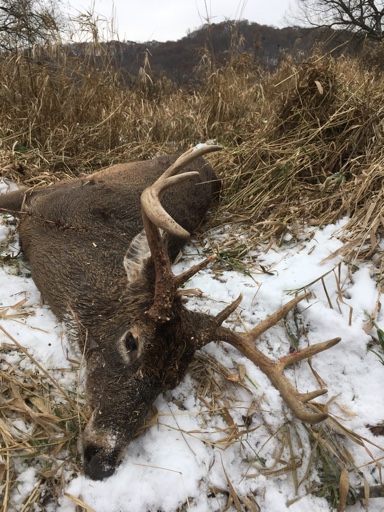I would challenge the folks that are doing tillage to do a worm sapling in your plots. Then do a sampling a short distance away in a native non tilled area. Worms are by far your best friend and best way to give your plants bio available nutrients. Deep tillage over a short period of time will kill many of the worms that are present in your fields. Minimum till kills far less and no till will kill none of them (unless your using synthetic commercial fertilizers). In the case of food plots the residue is not removed and is food for your earthworms. Most of the late summer planted food plot species do a great job at cycling nutrients and aerating the soil but they are only doing that for a relatively short period. Earthworms on the other hand are there doing it year round.
Ok gonna stir the pot a little and post a little something about earthworms from Wikipedia. Spoiler alert, if some of your best friends are trees, you may not like some of your wormy friends.
BTW, in a garden or trying to grow foodplots worms are good.... just don't let your tree friends know how you feel!
From Wiki:
- Earthworms are migrating north into forests between 45° and 69° latitude in North America that have lacked native earthworms since the
last ice age.
- These earthworm species are primarily from Europe and Asia, and they are disturbing many
nutrient cycles.
[2] By redistributing nutrients, mixing soil layers, and creating pores in the soil, they can affect the characteristics of the soil important to the rest of the ecosystem. Earthworms break up decomposing matter on the surface of the soil and carry or mix it into the surrounding soil, often carrying some of the nutrients deeper into the soil, where saplings and other young plants have trouble reaching them.
Influence on nutrient cycles and soil profiles[edit]
When organisms die, their remains fall to the
forest floor, where they begin decomposing into their constituent nutrients.
[6] In the absence of efficient detritivores such as earthworms, a thick layer of such
organic matter accumulates. And most northern forests in North America lack native earthworms, which were largely wiped out when the
ice sheets of the
Wisconsin glaciation scoured much of the continent down to the bedrock. A deep detritus layer is thus characteristic of the native ecosystem of the region, and many native plants have evolved to rely on it.
[2] As it slowly decomposes, it supplies
nutrients, particularly
potassium,
phosphorus, and
nitrogen, that are necessary for the production of cellular components such as
carbohydrates,
nucleic acids, and
proteins; these nutrients are often a limiting factor in growth and maturation.
[2] This provides for the growth of the trees, ferns, and smaller ground plants.
Effects on organisms[edit]
Without the nutrients available, some species that provide important biological
niches to the
ecosystem may be eradicated. In addition, young plants may be unable to grow without the surface nitrogen source provided by the layer of detritus.
[5] Since young plants do not have the deep root systems that older trees have, they often cannot obtain enough nutrients to survive.
[1] Thus, few saplings or under-canopy plants grow to full maturity and generally only the larger trees with extensive root systems survive. The addition of earthworms to an environment has been shown to decrease
mycorrhizal associations with roots. This adds to the problem of finding available nutrients for plants.
[3] Specifically, trees like
poplar,
birch, and
maples are disfavored by the change in habitat, as are many forest herbs like
Aralia,
Viola, and
Botrychium. These plants may be eradicated from the temperate forests after only months of the invasives' presence.[
citation needed] Also, when a decrease in overall ground cover and canopy vegetation occurs, food for other organisms becomes scarce.
[2] As a result, some organisms are forced to leave the areas, and the few plants remaining are often eaten shortly after germination.
With decreased ground-level vegetation, many terrestrial organisms like insects, small mammals, and other vertebrates must compete for fewer resources, leading to decreased diversity and population.
[9] In addition, the native species of worms may be unable to compete with the introduced species because the native ones are not well adapted to the new conditions of the forest soil.
[6]
Generally, with the addition of earthworms to a forest, a decrease in diversity is observed, and often other exotic species follow that can survive the nutrient diminished environment better than the natives. For example, in newly invaded forests
buckthorn and
garlic mustard, both invasive species, increase notably in population density.
[3][9] To summarize, there is a decrease in diversity, seedling populations, forest floor organic matter volume, and overall habitat quality. In addition, there is often an increase in invasive species and decreased diversity of non-plant organisms.
Confession: Not an Ag farmer but I am a tree farmer and in forestry circles this is a documented and talked about issue and how it has changed the composition of regrowth in some forest areas.
In closing, for these northern areas impacted by the glaciers, wonder how nature provided such great soil for thousands of years before all those nasty things those darn humans bring in.
